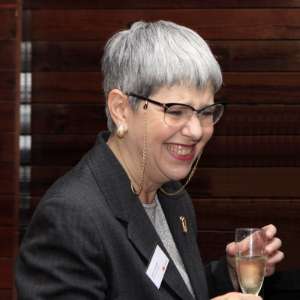La Cenerentola tells a modified version of the Cinderella fairy tale, with an evil stepfather in lieu of the stepmother in Charles Perrault’s story, and a bracelet instead of a glass slipper. Cesare Lievi’s Oper Zürich production (1994) starts with a somewhat corny wink at the fairy tale: a dozen pairs of shoes are in front of the curtain during the overture, illuminated with a spotlight. When the curtain opens we see Angelina (Cinderella) busy polishing them; as she needs to clean up quickly for the arrival of the Prince, she collects all the shoes in her apron, and keeps dropping them here and there. The production could be described as “minimalistic, with surreal overtones.” The same inconspicuous sets (Luigi Perego) represent the palaces of both Don Magnifico and the Prince, with different props and different lighting. There are some beautiful images, in particular Cinderella’s dress at the party, made of mirrors (costumes also by Perego), while the stepsisters are dressed one like a mermaid, and the other one like a bird.
The members of the (male) chorus are dressed in black suits and bowler hats, reminiscent of the famous Magritte’s painting; other references to Magritte are found in backdrops with blue skies and white clouds. The direction of the singers is extremely busy; Angelina in particular is constantly running around, which does not add much to the story. In general, it is a pleasant production, which does not go against the music.
Gianluca Capuano led La Scintilla in an historically informed execution. Rossini on period instruments is always a treat, if the orchestra is this good. The texture becomes more rarefied, and all the single instruments are audible. Capuano understands Rossini perfectly, his tempi were well chosen, with meaningful dynamics; he managed to keep pit and stage together even in the most tightly knit concertati, and to rein in the chorus which, occasionally, tended to rush. Enrico Maria Cacciari at the fortepiano was a delight in his imaginative accompaniment of the recitativi secchi, where he managed to be funny, which is hard to describe in words.
The one and only Cecilia Bartoli sang Angelina. The role still suits her like a glove, and she displayed her notorious, deep knowledge of the Rossini style. Her lyrical moments were poignant, her filati splendid, her coloratura an explosion of fireworks. She is so comfortable in this part that, in the middle of the final, fiendishly difficult rondo, she took the time to mime with her hands at an audience member that no, he could not take a video, all without missing a beat, and performing spectacular, inventive variations. Prince Ramiro was Levy Sekgapane, whose high, light tenor is very suited to Rossini. His high notes were easy, centred and well projected. His coloratura was precise, but, at times, it seemed not completely supported on the breath. His best moment was his aria “Sì, ritrovarla io giuro,” where he received show-stopping applause.
In this version of Cinderella, the Prince and his valet, Dandini, disguise as the other, to better understand the disposition of the candidates to be the Prince’s bride. The role of Dandini is a typical Rossini buffo baritone, and Nicola Alaimo played the part to perfection. His coloratura was spotless, his Rossini style beautiful. He has an uncommon understanding of opera buffa: his comic timing was perfect; his gags had a natural quality which I found irresistible. Particularly funny were the interactions with the other buffo character, Don Magnifico, father of the stepsisters and evil stepfather to Angelina. Alessandro Corbelli is a veteran of the role, he knows Don Magnifico inside and out, and his expertise more than compensated for the natural flaws of a bass-baritone voice showing signs of wear – he got through his three arias with relative ease, his sillabato still crisp. His old-fashioned comic flair was perfectly suited to the character; during the “drunken” aria his physicality reminded me of Charlie Chaplin.
The fairy godmother is replaced in the opera by Alidoro, the Prince’s tutor. Stanislav Vorobyov was a pleasant surprise for me. His bass sounded mellow and uniform throughout his entire range, with exciting, shimmering high notes, remarkable coloratura and elegance. Rebeca Olvera and Liliana Nikiteanu completed the cast as the stepsisters, with admirable singing and funny acting.
The evening was a tremendous success, and we enjoyed what is becoming a tradition in Bartoli-Capuano shows: an encore at the curtain call! This time it was the concertato “Questo è un nodo avviluppato,” conducted from the stage, with the singers competing for the wildest ornamentations and highest notes. A perfect ending for a fun evening.




